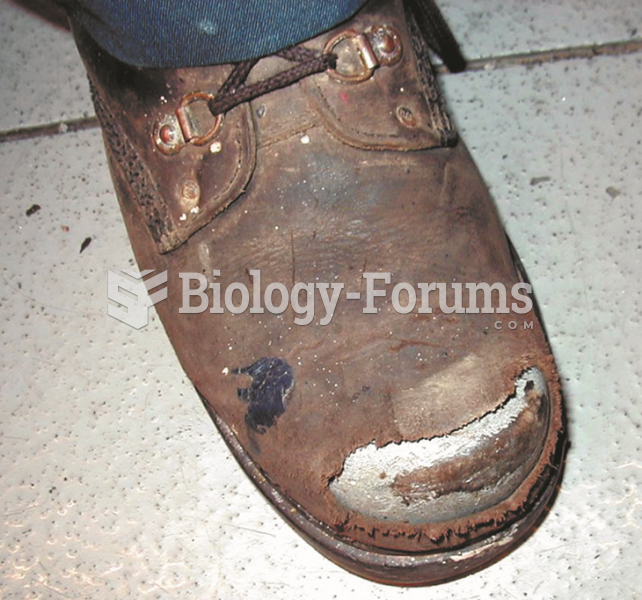|
|
|
Disorders that may affect pharmacodynamics include genetic mutations, malnutrition, thyrotoxicosis, myasthenia gravis, Parkinson's disease, and certain forms of insulin-resistant diabetes mellitus.
Intradermal injections are somewhat difficult to correctly administer because the skin layers are so thin that it is easy to accidentally punch through to the deeper subcutaneous layer.
One way to reduce acid reflux is to lose two or three pounds. Most people lose weight in the belly area first when they increase exercise, meaning that heartburn can be reduced quickly by this method.
There are over 65,000 known species of protozoa. About 10,000 species are parasitic.
Immunoglobulin injections may give short-term protection against, or reduce severity of certain diseases. They help people who have an inherited problem making their own antibodies, or those who are having certain types of cancer treatments.
 An example of color blindness test. A person with red-green color blindness would not be able to dis
An example of color blindness test. A person with red-green color blindness would not be able to dis
 James Madison was a key figure at the Constitutional Convention of 1787 in Philadelphia. He not only
James Madison was a key figure at the Constitutional Convention of 1787 in Philadelphia. He not only
 Steel-toed shoes are a worthwhile investment to help prevent foot injury due to falling objects. ...
Steel-toed shoes are a worthwhile investment to help prevent foot injury due to falling objects. ...




